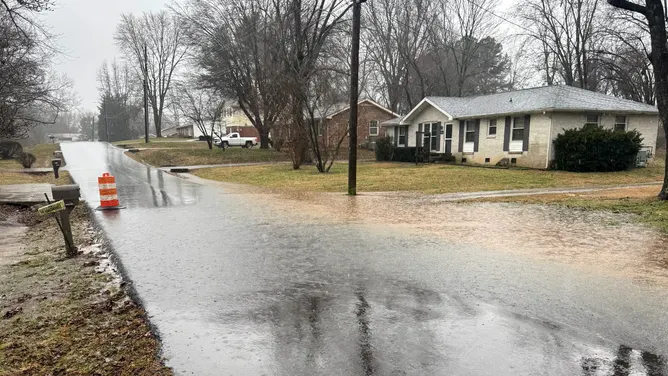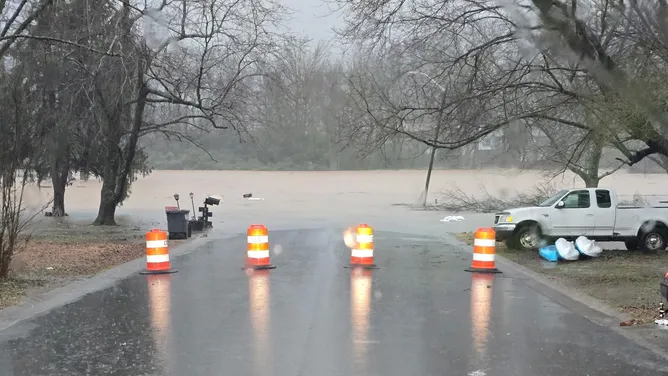Tennessee is facing a devastating natural disaster as severe flooding has caused levee failures, leading to multiple fatalities and widespread destruction. Heavy rainfall, rising river levels, and infrastructure collapse have left communities in distress, with emergency responders working tirelessly to rescue trapped residents.
The Cause of the Disaster
1. Extreme Rainfall and Rising Water Levels
- Tennessee experienced record-breaking rainfall, overwhelming rivers and reservoirs.
- The rapid rise in water levels led to flash floods, catching many residents off guard.
- Soil saturation increased, making it difficult for floodwaters to be absorbed.
- Climate change is suspected to have played a role in the increased frequency and intensity of storms.

2. Levee Failures and Infrastructure Collapse
- The excessive water pressure caused multiple levees to fail, leading to catastrophic flooding.
- Aging infrastructure and lack of maintenance contributed to structural weaknesses.
- Emergency workers had little time to reinforce levees before they collapsed.
- Previous reports had warned about the vulnerability of certain levees, but action was delayed due to funding issues.
Impact on Communities
1. Loss of Lives and Injuries
- Multiple fatalities have been reported, with numbers expected to rise as rescue efforts continue.
- Several residents sustained injuries due to fast-moving floodwaters and debris.
- Emergency responders are conducting search-and-rescue operations to locate missing individuals.
- Families are grieving the loss of loved ones, with many still unaccounted for.
2. Destruction of Homes and Businesses
- Thousands of homes have been submerged or completely destroyed.
- Local businesses have suffered extensive damage, leading to economic losses.
- Power outages and contaminated water supplies have worsened the crisis.
- Schools, hospitals, and other essential services are struggling to function.
3. Evacuations and Emergency Shelters
- Authorities have issued mandatory evacuation orders for high-risk areas.
- Emergency shelters have been set up, but many residents are struggling with limited resources.
- Volunteers and aid organizations are stepping in to provide food, water, and medical assistance.
- Some residents are hesitant to leave due to fear of looting and property loss.

Government and Rescue Efforts
1. State and Federal Response
- Tennessee’s governor has declared a state of emergency to allocate more resources.
- FEMA (Federal Emergency Management Agency) is assisting with relief operations.
- The National Guard has been deployed to help with evacuations and road clearances.
- Additional funding is being sought for long-term recovery and rebuilding efforts.
2. Local Heroes and Volunteer Efforts
- First responders and rescue teams are working around the clock to save lives.
- Community volunteers are stepping in to help with rescues and provide supplies.
- Fundraising efforts are underway to support affected families.
- Nonprofits and religious organizations are playing a crucial role in sheltering displaced residents.

Environmental and Long-Term Effects
1. Ecological Impact
- Flooding has led to soil erosion, affecting farmlands and local ecosystems.
- Contaminated floodwaters pose risks to wildlife and drinking water sources.
- The destruction of green spaces and wetlands may have long-term environmental consequences.
- Toxic chemicals and industrial waste may have leaked into water sources, increasing health risks.
2. Infrastructure Repairs and Recovery
- Roads, bridges, and levees need urgent repairs to prevent future disasters.
- The cost of rebuilding is expected to be in the billions, with federal aid required.
- Discussions are underway about upgrading flood defenses to prevent future failures.
- Engineers and urban planners are pushing for better city drainage systems to mitigate future risks.

How Residents Can Stay Safe
1. Emergency Preparedness Tips
- Stay informed through local weather updates and emergency alerts.
- Prepare an emergency kit with essentials like food, water, and medical supplies.
- Avoid driving or walking through floodwaters, as currents can be stronger than they appear.
- Develop an emergency plan with family members to ensure quick action during disasters.
2. Seeking Help and Assistance
- Contact local authorities for evacuation and shelter information.
- Apply for financial aid and disaster relief programs if affected.
- Seek mental health support to cope with trauma caused by the disaster.
- Report any structural damage to buildings and roads to prevent further accidents.
The Role of Climate Change in Future Disasters
- Scientists warn that extreme weather events like this flood may become more frequent due to climate change.
- Warmer temperatures lead to increased moisture in the atmosphere, resulting in heavier rainfall.
- Urban development in flood-prone areas has increased risks, emphasizing the need for sustainable planning.
- Experts are calling for stronger policies on climate resilience to prevent similar disasters.
Conclusion
The devastating floods in Tennessee serve as a tragic reminder of nature’s power and the importance of infrastructure maintenance and emergency preparedness. As communities come together to rebuild, government agencies and relief organizations are working tirelessly to provide aid. The road to recovery will be long, but with collective effort, Tennessee will overcome this disaster. Moving forward, there is an urgent need to strengthen flood defenses, improve emergency response strategies, and address the growing impact of climate change to protect lives and properties in the future.
Severe Winter Storms Slam Chicago and Detroit, Causing Widespread Disruptions






